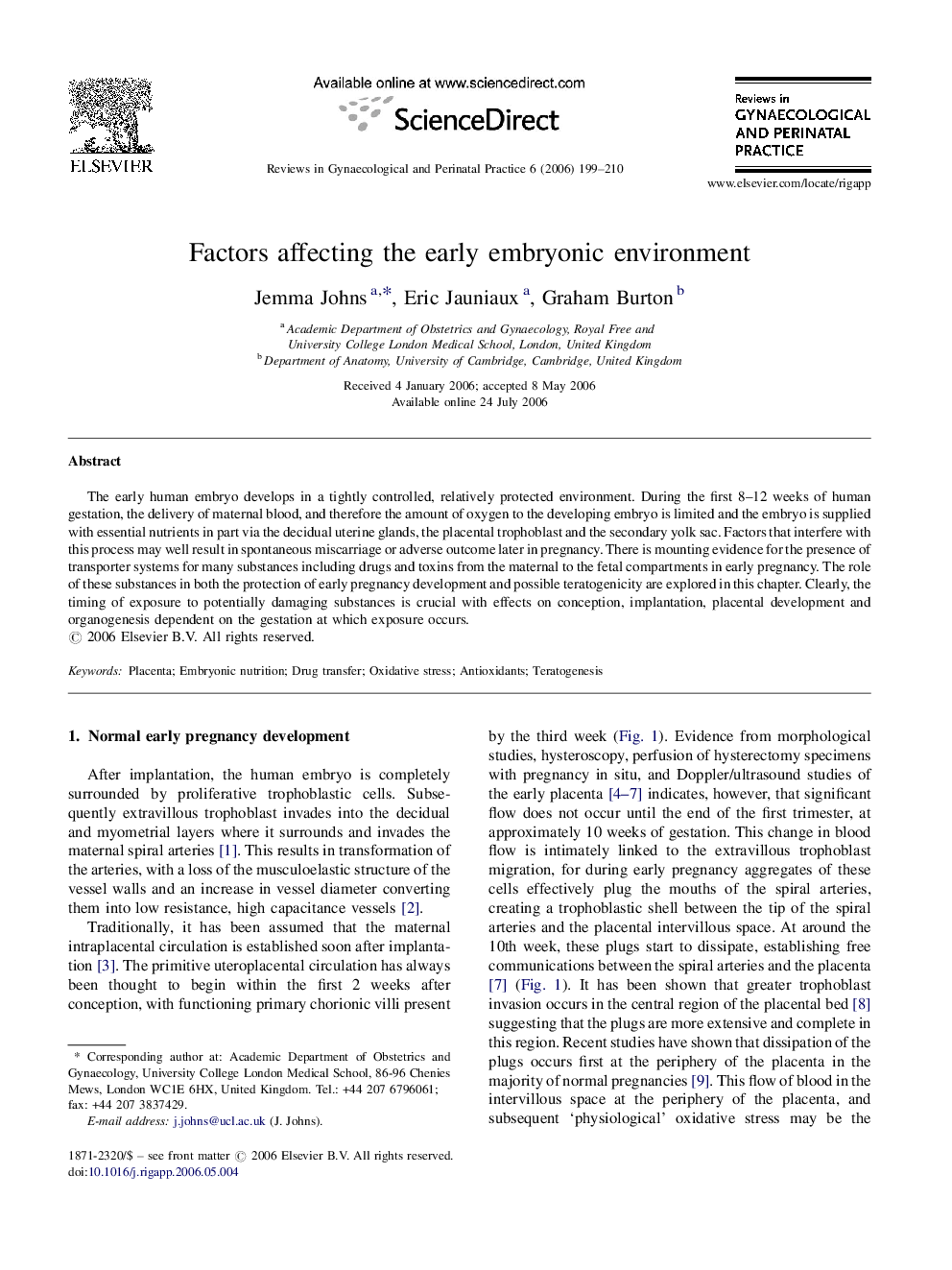| Article ID | Journal | Published Year | Pages | File Type |
|---|---|---|---|---|
| 3973696 | Reviews in Gynaecological and Perinatal Practice | 2006 | 12 Pages |
The early human embryo develops in a tightly controlled, relatively protected environment. During the first 8–12 weeks of human gestation, the delivery of maternal blood, and therefore the amount of oxygen to the developing embryo is limited and the embryo is supplied with essential nutrients in part via the decidual uterine glands, the placental trophoblast and the secondary yolk sac. Factors that interfere with this process may well result in spontaneous miscarriage or adverse outcome later in pregnancy. There is mounting evidence for the presence of transporter systems for many substances including drugs and toxins from the maternal to the fetal compartments in early pregnancy. The role of these substances in both the protection of early pregnancy development and possible teratogenicity are explored in this chapter. Clearly, the timing of exposure to potentially damaging substances is crucial with effects on conception, implantation, placental development and organogenesis dependent on the gestation at which exposure occurs.
